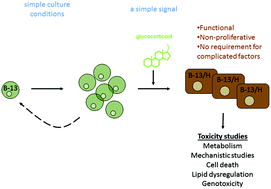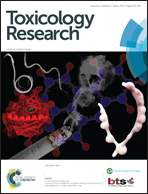An expandable donor-free supply of functional hepatocytes for toxicology
Abstract
The B-13 cell is a readily expandable rat pancreatic acinar-like cell that differentiates on simple plastic culture substrata into replicatively-senescent hepatocyte-like (B-13/H) cells in response to glucocorticoid exposure. B-13/H cells express a variety of liver-enriched and liver-specific genes, many at levels similar to hepatocytes in vivo. Furthermore, the B-13/H phenotype is maintained for at least several weeks in vitro, in contrast to normal hepatocytes which rapidly de-differentiate under the same simple – or even under more complex – culture conditions. The origin of the B-13 cell line and the current state of knowledge regarding differentiation to B-13/H cells are presented, followed by a review of recent advances in the use of B-13/H cells in a variety of toxicity endpoints. B-13 cells therefore offer Toxicologists a cost-effective and easy to use system to study a range of toxicologically-related questions. Dissecting the mechanism(s) regulating the formation of B-13/H cell may also increase the likelihood of engineering a human equivalent, providing Toxicologists with an expandable donor-free supply of functional rat and human hepatocytes, invaluable additions to the tool kit of in vitro toxicity tests.


 Please wait while we load your content...
Please wait while we load your content...